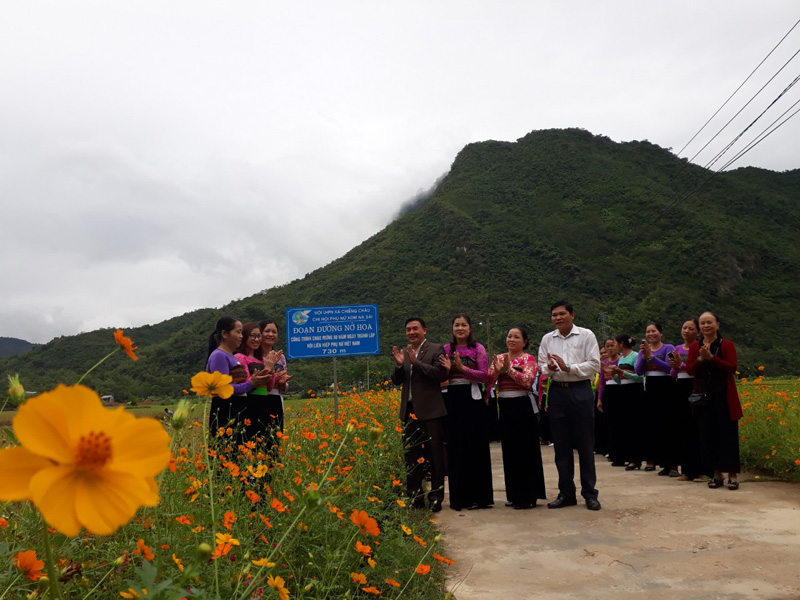
(HBO) - Recently, the movement of turning waste collection areas and weed paths into "flowering sections" have been actively implemented by the Women's Union of Mai Chau district.

Over the past few years, in order to promote
the role of staff and women members in protecting environment and building the
green- clean- beautiful scenes, the District Women's Union has launched a
campaign "Every woman member planted a flower". The first model was
implemented from January 2018, until now, the whole district had 13/23 communes
and towns implementing the campaign.
On these days, the 730- meter road leading
from National Highway 15 into Na Sai village, Chieng Chau commune is like
wearing a new more brilliant coat by being prominent between two rice fields
with a colorful road in a variety of flower species, such as butterfly wings,
white flowers, violet flowers, etc. These are all flowers with good vitality,
easy to grow, easy to care, and they can bloom all around the year and in
accordance with the cultural identity of the site. Many groups and women's
unions activities have been flexible, creative and supported by local
committees, local authorities and enthusiastic participation of local people,
such as they plant flowers at the sections where they often waste garbage,
causing bad appearance and environmental pollution.
Ms Ha Thi Yen – the Chairwoman of Chieng Chau
Commune Women's Union said: "Right after the district Women's Union
launched the movement" Every woman member planted a tree", Chieng
Chau Commune Women's Union quickly deployed to each branch, each members of the
whole commune and received the active response of most members participating.
Some contributed their efforts, some contributed their money to purchase flower
seedlings, etc., so far, the commune has built two long "flowering
roads" in Na Sai hamlet and Lac village, while in other hamlets, women
have planted around their houses and around the area of the cultural houses of
the village."
Gongs hold a special place in the cultural and spiritual life of the Muong ethnic people in Hoa Binh province. More than musical instruments, they are an indispensable part of community rituals and collective memory, echoing through generations as a spiritual thread linking the past, present, and future.
Preserving and promoting the cultural values of the Muong ethnic group has become an urgent task in the current context, as many traditional values face the risk of fading away. This effort requires not only protecting the cultural identity but also eliminating outdated customs and developing a modern cultural lifestyle, contributing to sustainable values for the Muong community in Hoa Binh province.
The Muong ethnic culture, deeply rooted in Vietnam’s mountainous north, continues to be preserved and revitalised by dedicated individuals and communities determined to safeguard their ancestral identity.
The Muong group is one of the largest ethnic minorities in Vietnam, primarily found in Hoa Binh province. The Muong people in Hoa Binh boast a rich and diverse cultural treasure that reflects the unique identity of this ethnic group. Accounting for over 63% of the province's population, they have created and preserved numerous distinctive cultural values, contributing to their unique identity. Their cultural heritage is an invaluable asset, at the heart of their national identity, and represents a vibrant spiritual life that must be preserved and promoted in today’s modern world.
For generations, the ethnic communities of Hoa Binh province, particularly the Muong people, have preserved vibrant festivals deeply intertwined with the region’s geography, nature, and social traditions. These celebrations enrich Hoa Binh’s spiritual life and cultural identity, reflecting both folk beliefs and the intermingling of ethnic customs. Many of these festivals have endured the test of time, passed down through generations and continuing to thrive today. Among them, the Khai Ha (Going Down to the Field) festival stands out as one of the most significant events of the Muong ethnic group.
Muong calendar, known as sach doi, is an ancient folk knowledge system developed through observations of the movement of the pleiades star. This unique calendar consists of 12 bamboo sticks, each representing a lunar month. Specific days within each month are marked with distinct symbols, guiding locals in determining auspicious and inauspicious days for important activities.



